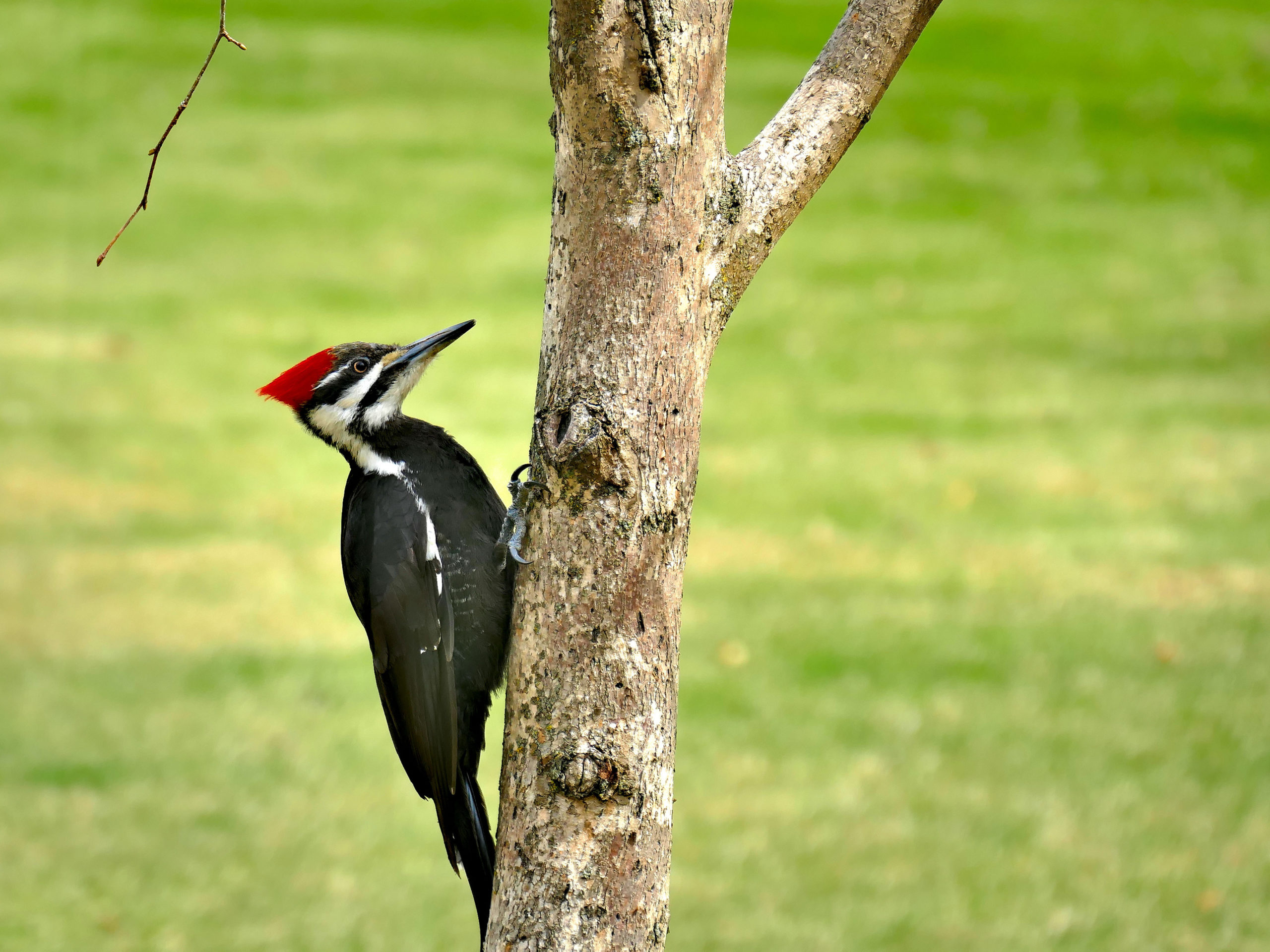
Last week, while visiting a friend on an island in Little Sebago Lake, Maine, I had an unusual wildlife encounter: a group of four pileated woodpeckers (Dryocopus pileatus) flew into camp. It is our largest woodpecker species, with a wingspan of 30 inches and standing 19 inches tall. Although it is listed as being “crow-sized,” it appears much larger than a crow to me. That is mostly likely due to its striking pattern: contrasting black and white plumage and a crown of brilliant red feathers. This was apparently the model that cartoonist Walter Lantz used for his popular Woody Woodpecker creation.
In my limited experience with this species, it is more often heard than seen. Its distinctive drumming sound can be heard at any time of year and carries far through the forest. To my ear, it sounds like a pingpong ball dropped on a hard surface, the “beat” gradually speeding up and getting softer as the ball comes closer and closer to rest.
Drumming behavior is used in a variety of situations by both sexes. It is part of their courtship ritual, it may be used to summon a mate from a distance, and it is used to establish and defend a territory. Since this species does not migrate and defends its territory throughout the year, drumming can be heard during any month.
My handful of pileated sightings have all been of a single bird, so seeing four flying in together was quite a surprise. Unaware that they do not migrate, my first impression was that I was witnessing a seasonal movement. One of my references mentioned that the fledglings will stay with the parents for several months before dispersing and seeking territories of their own. My guess is that I was witnessing a family group moving together in the adults’ territory, as they were quite close together and there were no aggressive displays.
The group clambered around the lower trunk of one of the largest white pines on the island, reworking a partially excavated area for their favorite prey: both the larval and adult forms of the carpenter ant. Their strong, chisel-like bills are capable of making quite large and deep holes in tree trunks, and their long, barbed tongues can reach far into crevices of the ant gallery to extract larvae and dormant adults.
To avoid wasting energy and time excavating randomly, pileateds and a number of other woodpecker species can apparently detect the location of carpenter ant and other insect colonies inside the tree using visual clues (insect entrance holes) and auditory clues (listening for the sounds of insects at work inside).
The next morning we were visited by a single pileated, a male as determined from the red line extending from the bill to the throat. After investigating another white pine trunk, it hopped over to the three-quarter-inch diameter trunk of an autumn olive shrub and began eating the red berries, turning its head every so often to point its bill down and spit out the hard pits. I was surprised to learn that fruits and nuts comprise a significant portion of its diet.
Substantial tracts of mature, closed canopy forest that includes large dead trees is the habitat required for pileated woodpeckers. The large snags are key for excavating their substantial cavity nests and night roosts which measure up to 2 feet in depth. Since Long Island was settled in the 1600s and most of the mature forest was cleared soon after, the range map for pileateds does not include this area.
I have found sign of pileateds here in the form of excavated tree trunks, but I have yet to hear or see one on Long Island. That may change as our forest nature preserves mature. A paper published in the Northeastern Naturalist in 2020 documented two breeding pairs on Staten Island, one in a mature forest measuring only 74 acres in size! The other Staten Island site is a 3,000-acre greenbelt which is also home to a pair of beavers. Later this fall I plan on surveying several Staten Island riparian sites for otters. In the meantime, I look forward to the establishment of the pileated woodpecker on Long Island; it would be a thrilling addition to our native fauna.